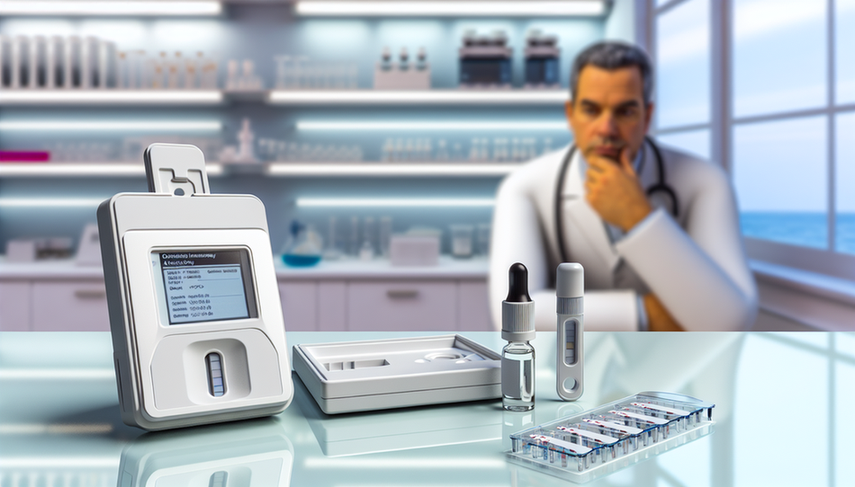Portable Immunoassay: Rapid Detection of Antigens and Antibodies for Personalized Diagnosis

The evolution of portable immunoassays has revolutionized healthcare professionals' ability to perform rapid detection of antigens and antibodies, enabling a more personalized diagnosis. These devices have proven to be essential tools in modern clinical practice, particularly in the context of emerging and re-emerging infectious diseases. The ability to conduct rapid and accurate tests at the point of care not only enhances diagnostic efficiency but also allows for more timely medical intervention.
Advances in Portable Immunoassay Technology
Recent developments in immunoassay technology have led to the creation of devices that are not only portable but also highly sensitive and specific. A notable example is the use of dual lateral flow optical/chemiluminescent immunosensors for the detection of IgA in saliva and serum in patients with COVID-19. This type of technology enables non-invasive and ultra-sensitive detection of early immune responses, which is crucial for monitoring disease progression and vaccine efficacy.
Another significant advancement is the development of electrochemiluminescent detection platforms that utilize array chips for the detection of SARS-CoV-2 nucleocapsid proteins. These platforms offer high sensitivity and do not require labels, simplifying the detection process and reducing costs.
Furthermore, the integration of microfluidic technologies and mobile devices has enabled the creation of systems such as the all-in-one point-of-care testing device, which can perform serological and viral antigen analyses simultaneously. Such devices are essential for differential diagnosis in the context of multiple respiratory infections, including those caused by SARS-CoV-2, influenza, and other respiratory viruses.
Conclusions
The implementation of portable immunoassays in daily clinical practice represents a significant advancement towards a more personalized diagnosis. The ability to conduct rapid detection of antigens and antibodies at the point of care not only improves diagnostic efficiency but also allows for more timely and precise medical intervention. As these technologies continue to evolve, we are likely to see even greater integration of these tools in healthcare, thereby improving patient outcomes.
Referencias
- [1] Dual lateral flow optical/chemiluminescence immunosensors for the rapid detection of salivary and serum IgA in patients with COVID-19 disease.
- [2] A self-enhanced electrochemiluminescence array chip for portable label-free detection of SARS-CoV-2 nucleocapsid protein with smartphone.
- [3] An all-in-one point-of-care testing device for multiplexed detection of respiratory infections.
Created 24/1/2025
